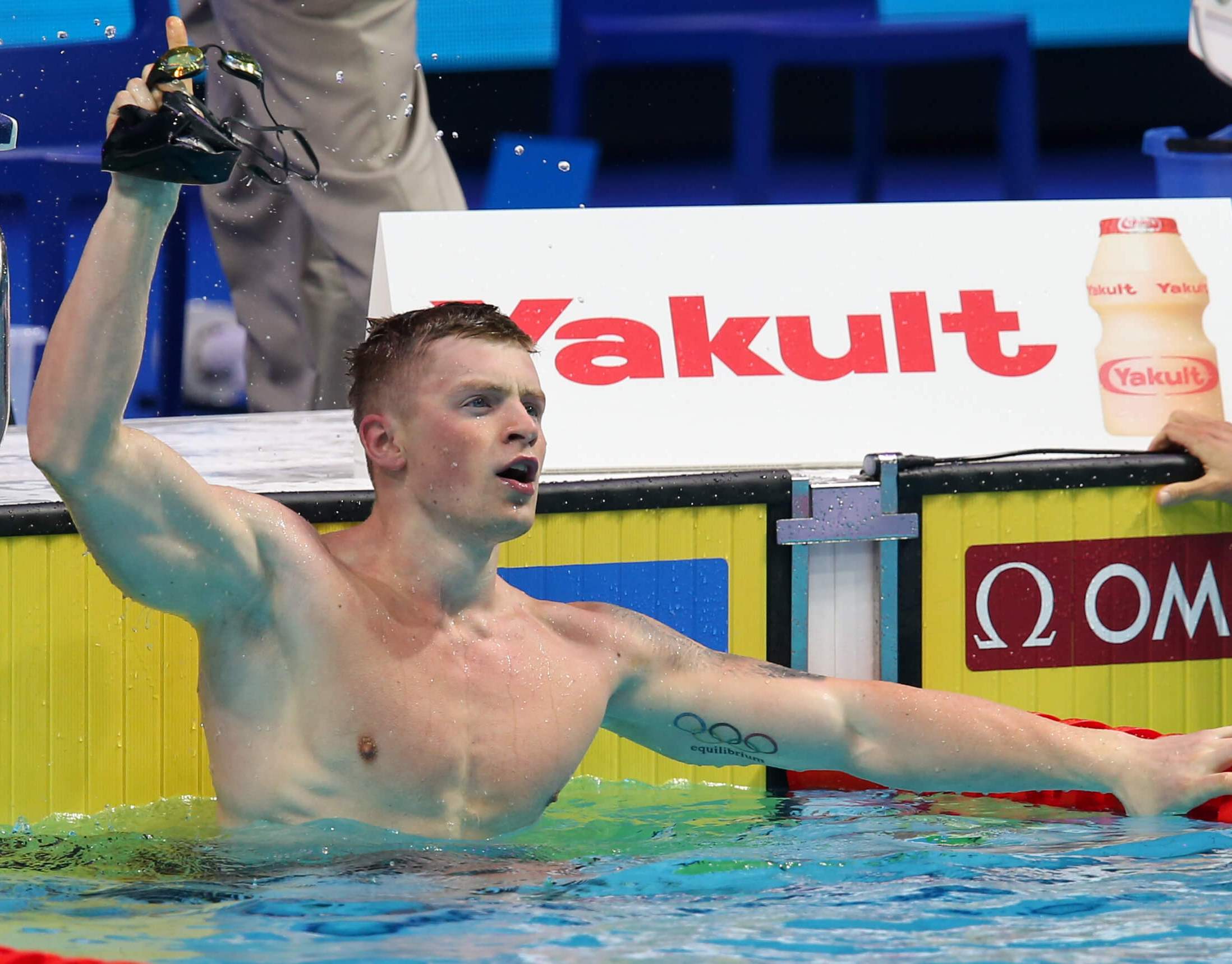Previsão de resultados de nado peito e borboleta na natação com base na história das Olimpíadas

Downloads
Palavras-chave:
Natação, Performance Atlética, Nado Peito, Nado Borboleta, Análise, Jogos OlímpicosResumo
Aqui descrevemos variações históricas no desempenho olímpico de nado peito e borboleta e prevemos os resultados da natação para os Jogos Olímpicos de 2021 em Tóquio. Foram analisados os resultados dos finalistas, vencedores e últimos participantes das finais femininas e masculinas e criado um modelo matemático preditivo. Foram apresentados os tempos previstos para as futuras Olimpíadas. O desempenho da natação entre os atletas olímpicos tem melhorado constantemente, com tempos recordes de 18,51 s para as finalistas femininas nos 100 m borboleta (uma melhoria de 24,63%) e 31,33 s para os finalistas masculinos nos 200 m borboleta (21,44%). Os resultados em todos os grupos analisados mostraram melhora no desempenho atlético e a diferença entre os finalistas diminuiu. O desempenho das mulheres olímpicas melhorou mais rapidamente do que o dos homens, reduzindo a disparidade entre os gêneros. Concluímos que o desempenho da natação entre os atletas olímpicos continua a melhorar.
Nota do Editor: Imagem ilustrativa. O nadador britânico Adam Peaty: desafiando as estatísticas. Fonte: SS PRESS - SATIRO SODRÉ
Referências
(1) Mountjoy M, Junge A, Alonso JM, Clarsen B, Pluim BM, Shrier I, et al. Consensus statement on the methodology of injury and illness surveillance in FINA (aquatic sports): Table 1. British Journal of Sports Medicine. 2015 Nov 27;50(10):590–6.
(2) Ludovic Seifert. World book of swimming: from science to performance. Hauppauge, N.Y.: Nova Science; 2011; ISBN 9781616682026.
(3) Lippi G, Banfi G, Favaloro EJ, Rittweger J, Maffulli N. Updates on improvement of human athletic performance: focus on world records in athletics. British Medical Bulletin. 2008 Aug 1;87(1):7–15.
(4) Nevill A, Whyte G, Holder R, Peyrebrune M. Are There Limits to Swimming World Records? International Journal of Sports Medicine. 2007 Dec;28(12):1012–7.
(5) Stanula A, Maszczyk A, Roczniok R, Pietraszewski P, Ostrowski A, Zając A, et al. The Development and Prediction of Athletic Performance in Freestyle Swimming. Journal of Human Kinetics [Internet]. 2012 May 1 [cited 2019 Oct 7];32(1):97–107. Available from: https://www.ncbi.nlm.nih.gov/pmc/articles/PMC3590874/
(6) Berthelot G, Sedeaud A, Marck A, Antero-Jacquemin J, Schipman J, Saulière G, et al. Has Athletic Performance Reached its Peak? Sports Medicine [Internet]. 2015 Jun 21 [cited 2019 Nov 13];45(9):1263–71. Available from: https://www.ncbi.nlm.nih.gov/pmc/articles/PMC4536275/
(7) O’Connor LM, Vozenilek JA. Is It the Athlete or the Equipment? An Analysis of the Top Swim Performances from 1990 to 2010. Journal of Strength and Conditioning Research. 2011 Dec;25(12):3239–41.
(8) Seifert L, Leblanc H, Chollet D, Sanders R, Persyn U. Breaststroke kinematics. In World Book of Swimming: From Science to Performance; Nova Publishers: Hauppauge, NY, USA, 2011; pp. 135–152. ISBN 9781616682026.
(9) Barbosa TM, Fernandes RJ, Morouco P, Vilas-Boas JP. Predicting the intra-cyclic variation of the velocity of the centre of mass from segmental velocities in butterfly stroke: a pilot study. DOAJ (DOAJ: Directory of Open Access Journals). 2008 Jan 1; 7, 201–209.
(10) de Jesus K, de Jesus K, Figueiredo PA, Gonçalves P, Vilas-Boas JP, Fernandes RJ. Effects of Fatigue on Kinematical Parameters During Submaximal and Maximal 100-m Butterfly Bouts. Journal of Applied Biomechanics. 2012 Nov;28(5):599–607.
(11) Barbosa T, Fernandes R, Keskinen K, Colaço P, Cardoso C, Silva J, et al. Evaluation of the Energy Expenditure in Competitive Swimming Strokes. International Journal of Sports Medicine. 2006 Apr 11;27(11):894–9.
(12) Strzała M, Krężałek P, Kaca M, Głąb G, Ostrowski A, Stanula A, et al. Swimming Speed of The Breaststroke Kick. Journal of Human Kinetics [Internet]. 2012 Dec 30 [cited 2020 Jun 3];35:133–9. Available from: https://www.ncbi.nlm.nih.gov/pmc/articles/PMC3588692/
(13) Strzała M, Stanula A, Krężałek P, Ostrowski A, Kaca M, Głąb G. Butterfly Sprint Swimming Technique, Analysis of Somatic and Spatial-Temporal Coordination Variables. Journal of Human Kinetics. 2017 Dec 28;60(1):51–62.
(14) FINA, R. FINA Swimming Rules: 2017–2021. Fed. Int. Natat. 2017; 1, 15.
(15) Maglischo EW. Swimming fastest. Champaign, Il: Human Kinetics; 2003.
(16) Pop C. The Modern Olympic Games–A Globalised Cultural and Sporting Event. Procedia - Social and Behavioral Sciences [Internet]. 2013 Oct;92:728–34. Available from: https://www.sciencedirect.com/science/article/pii/S1877042
(17) Jensen RD, Christiansen AV, Henriksen K. The Olympic Games: The Experience of a Lifetime or Simply the Most Important Competition of an Athletic Career? Physical Culture and Sport Studies and Research. 2014 Dec 30;64(1):41–52.
(18) Pyne DB, Trewin CB, Hopkins WG. Progression and variability of competitive performance of Olympic swimmers. Journal of Sports Sciences. 2004 Jul;22(7):613–20.
(19) Trewin CB, Hopkins WG, Pyne DB. Relationship between world-ranking and Olympic performance of swimmers. Journal of Sports Sciences. 2004 Apr;22(4):339–45.
(20) V Issurin, Kaufman L, Lustig G, Tenenbaum G. Factors affecting peak performance in the swimming competition of the Athens Olympic Games. PubMed. 2008 Mar 1;48(1):1–8.
(21) Leroy A, Marc A, Dupas O, Jean Lionel Rey, Gey S. Functional Data Analysis in Sport Science: Example of Swimmers’ Progression Curves Clustering. Applied sciences. 2018 Sep 30;8(10):1766–6.
(22) Costa MJ, Marinho DA, Reis VM, Silva AJ, Marques MC, Bragada JA, et al. Tracking the performance of world-ranked swimmers. PubMed. 2010 Jan 1; 9, 411–417.
(23) Hellard P, Avalos M, Millet G, Lacoste L, Barale F, Chatard JC. Modeling the Residual Effects and Threshold Saturation of Training: A Case Study of Olympic Swimmers. The Journal of Strength and Conditioning Research. 2005;19(1):67–75.
(24) Chınurum JoyN, OgunjImi LO, O’Neill CB. Gender and Sports in Contemporary Society. Journal of Educational and Social Research. 2014 Nov 1;4(7).
(25) Oliver, KL, Hamzeh M. “The boys won’t let us play”: Fifth-Grade mestizas challenge physical activity discourse at school. Res. Q. Exerc. Sport 2010; 81, 38–51.
(26) Hannon J, Soohoo S, Reel J, Ratliffe T. Gender Stereotyping and the Influence of Race in Sport Among Adolescents. Research Quarterly for Exercise and Sport. 2009 Sep;80(3):676–84.
(27) FINA. Swimming Results. Available online: www.fina.org/swimming/results (accessed on 6 April 2021).
(28) Zheng J. A Policy Analysis of the Development of Elite Swimming in China Between 2000 and 2012: A National Team Perspective. The International Journal of the History of Sport. 2017 Aug 13;34(12):1247–74.
(29) Gerrard D. Drug misuse in sport: a historical perspective. PubMed. 2015 Dec 4;128(1426):16–8.
(30) Psycharakis SG, Cooke CB, Paradisis GP, O’Hara J, Phillips G. Analysis of Selected Kinematic and Physiological Performance Determinants During Incremental Testing in Elite Swimmers. Journal of Strength and Conditioning Research. 2008 May;22(3):951–7.
(31) Sánchez J, Arellano R. Stroke index values according to level, gender, swimming style and event race distance. In Proceedings of the 20 International Symposium on Biomechanics in Sports, Cáceres, Spain, 1–5 July 2002; pp. 56–59.
(32) Knechtle B, Dalamitros AA, Barbosa TM, Sousa CV, Rosemann T, Nikolaidis PT. Sex Differences in Swimming Disciplines—Can Women Outperform Men in Swimming? International Journal of Environmental Research and Public Health [Internet]. 2020 May 1 [cited 2020 Sep 29];17(10). Available from: https://www.ncbi.nlm.nih.gov/pmc/articles/PMC7277665/
(33) Hunter SK. Sex differences in human fatigability: mechanisms and insight to physiological responses. Acta Physiologica. 2014 Feb 25;210(4):768–89.
(34) Fukuda DH, Smith AE, Kendall KL, Cramer JT, Stout JR. An Alternative Approach to the Army Physical Fitness Test Two-Mile Run Using Critical Velocity and Isoperformance Curves. Military Medicine. 2012 Feb;177(2):145–51.
(35) Heazlewood T. Prediction versus reality: the use of mathematical models to predict elite performance in swimming and athletics at the olympic games. Proc. J. Sports Sci. Med. 2006; 5, 541–547.
(36) Peronnet F, Thibault G. Mathematical analysis of running performance and world running records. Journal of Applied Physiology. 1989 Jul 1;67(1):453–65.
(37) Chatterjee S, Laudato M. An Analysis of World Record Times of Men and Women in Running, Skating, and Swimming. The Journal of Strength and Conditioning Research. 1996;10(4):274–278.
(38) Aspenes, S.; Kjendlie, P.L.; Hoff, J.; Helgerud, J. Combined strength and endurance training in competitive swimmers. J. Sport. Sci. Med. 2009, 8, 357–365.
(39) Robazza C, Pellizzari M, Bertollo M, Hanin YL. Functional impact of emotions on athletic performance: Comparing the IZOF model and the directional perception approach. Journal of Sports Sciences. 2008 Jul 17;26(10):1033–47.
(40) Zajac A, Cholewa J, Stanislaw Poprzecki, Waskiewicz Z, Jozef Langfort. Effects of sodium bicarbonate ingestion on swim performance in youth athletes. J. Sport. Sci. Med. 2009, 8, 45–50.
(41) Neptune RR, McGowan CP, Fiandt JM. The Influence of Muscle Physiology and Advanced Technology on Sports Performance. Annual Review of Biomedical Engineering. 2009 Aug;11(1):81–107.
(42) Sedeaud A, Marc A, Schipman J, Schaal K, Danial M, Guillaume M, et al. Secular trend: morphology and performance. Journal of Sports Sciences. 2014 Feb 28;32(12):1146–54.
(43) Siders WA, Lukaski HC, Bolonchuk WW. Relationships among swimming performance, body composition and somatotype in competitive collegiate swimmers. PubMed. 1993 Jun 1;33(2):166–71.
(44) König S, Valeri F, Wild S, Rosemann T, Rüst C, Knechtle B. Change of the age and performance of swimmers across World Championships and Olympic Games finals from 1992 to 2013 – a cross-sectional data analysis. SpringerPlus [Internet]. 2014 [cited 2019 May 28];3(1):652. Available from: https://www.ncbi.nlm.nih.gov/pmc/articles/PMC4237683/
(45) Reardon C, Creado S. Drug abuse in athletes. Substance Abuse and Rehabilitation [Internet]. 2014 Aug 14;5(5):95–105. Available from: https://www.ncbi.nlm.nih.gov/pmc/articles/PMC4140700/
(46) DiFiori JP, Green G, Meeuwisse W, Putukian M, Solomon GS, Sills A. Return to sport for North American professional sport leagues in the context of COVID-19. British Journal of Sports Medicine [Internet]. 2020 Sep 23 [cited 2021 Mar 9]; Available from: https://bjsm.bmj.com/content/early/2020/10/08/bjsports-2020-103227
(47) Sarto F, Impellizzeri FM, Spörri J, Porcelli S, Olmo J, Requena B, et al. Impact of Potential Physiological Changes due to COVID-19 Home Confinement on Athlete Health Protection in Elite Sports: a Call for Awareness in Sports Programming. Sports Medicine. 2020 May 28;50(8):1417–9.
(48) Reardon CL, Bindra A, Blauwet C, Budgett R, Campriani N, Currie A, et al. Mental health management of elite athletes during COVID-19: a narrative review and recommendations. British Journal of Sports Medicine. 2020 Sep 23;55(11):bjsports-2020-102884.
NOTA
Artigo adaptado e traduzido para o português pelos editores de NADAR! SWIMMING MAGAZINE para republicação, conforme normas de submissão do periódico. Versão original em: https://www.mdpi.com/1660-4601/18/12/6621 LICENÇA ORIGINAL E DA ADAPTAÇÃO: https://creativecommons.org/licenses/by/4.0/. OBS.: Errata em: https://www.mdpi.com/1660-4601/18/16/8401
Publicado
Como Citar
Edição
Seção
ARK
Licença
Copyright (c) 2024 Maciej Hołub, Arkadiusz Stanula, Jakub Baron , Wojciech Głyk, Thomas Rosemann , Beat Knechtle

Este trabalho está licenciado sob uma licença Creative Commons Attribution 4.0 International License.






